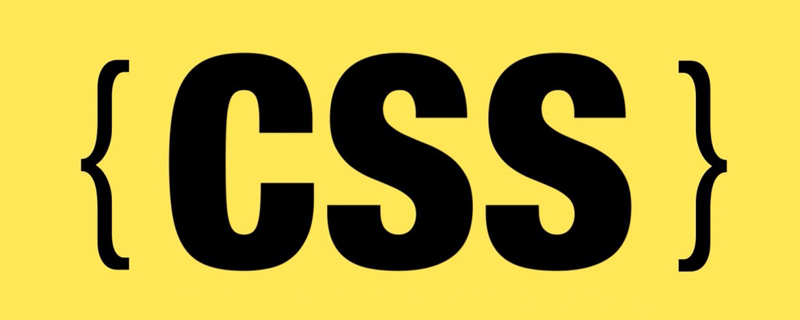If you implement a DIV overlap and want them to overlap in the order we want, this requires CSS Absolute positioningTo achieve this, today I will tell you about the CSS of overlapping styles. Implementation.
DIV overlap CSS allows DIVs to overlap and overlap. CSS allows two DIVs or multiple DIVs to overlap and overlap in order.
It requires CSS to allow DIVs to overlap and overlap in the desired order, that is, CSS absolute positioning is implemented.
Overlapping styles require main CSS style explanation
1, z-index Overlapping order attribute
2, position:relative Set the object properties to positionable (overlapping) with position:absolute
3, left right top bottomAbsolute positioning specific position settings
Coordinated style
1, css width
2, css height
3, background In order to observe the effect, we set different background colors for different DIVs. Difference
Next, we will provide you with an instance layout of overlapping and superimposing DIVs according to your own wishes. We create 4 new DIV boxes, one large DIV box with the CSS name ".div-relative", three small DIV boxes placed in the first large DIV object box, and the DIV names are ".div-a", ".div-b", ".div-c".
Unsorted, sorted DIV cascading and overlapping examples
The complete HTML source code is as follows:
<!DOCTYPE html>
<html>
<head>
<meta charset="utf-8" />
<title>div重叠 叠加实例 未排层叠顺序 www.divcss5.com</title>
<style>
.div-relative{position:relative; color:#000; border:1px solid #000; width:500px; height:400px}
.div-a{ position:absolute; left:30px; top:30px; background:#F00; width:200px; height:100px}
/* css注释说明: 背景为红色 */
.div-b{ position:absolute; left:50px; top:60px; background:#FF0; width:400px; height:200px}
/* 背景为黄色 */
.div-c{ position:absolute; left:80px; top:80px; background:#00F; width:300px; height:300px}
/* DIV背景颜色为蓝色 */
</style>
</head>
<body>
<div class="div-relative">
<div class="div-a">我背景为红色</div>
<div class="div-b">我背景为黄色</div>
<div class="div-c">我背景为蓝色</div>
</div>
</body>
</html>Example description:
We use position to achieve absolute positioning, set the position:relative attribute on the parent, and set position:absolute on the child plus left or right and top or bottom to achieve arbitrary positioning of the child within the parent. In the original case, the overlap is arranged in the order of the DIV codes themselves. The later the DIV box is entered, the closer it is to the front (floating on top). In addition to changing the html order of the div code in the source code itself, we can also use css z-index to implement the order of DIV layers.
I believe you have mastered the methods after reading these cases. For more exciting information, please pay attention to other related articles on the php Chinese website!
Related reading:
The necessity of initializing CSS before starting a front-end project
# The advantages and disadvantages of #asyncio
Detailed explanation of front-end responsive layout, responsive images, and self-made grid system
The above is the detailed content of How to use CSS to overlap two DIVs. For more information, please follow other related articles on the PHP Chinese website!
 css ul标签怎么去掉圆点Apr 25, 2022 pm 05:55 PM
css ul标签怎么去掉圆点Apr 25, 2022 pm 05:55 PM在css中,可用list-style-type属性来去掉ul的圆点标记,语法为“ul{list-style-type:none}”;list-style-type属性可设置列表项标记的类型,当值为“none”可不定义标记,也可去除已有标记。
 css与xml的区别是什么Apr 24, 2022 am 11:21 AM
css与xml的区别是什么Apr 24, 2022 am 11:21 AM区别是:css是层叠样式表单,是将样式信息与网页内容分离的一种标记语言,主要用来设计网页的样式,还可以对网页各元素进行格式化;xml是可扩展标记语言,是一种数据存储语言,用于使用简单的标记描述数据,将文档分成许多部件并对这些部件加以标识。
 css3怎么实现鼠标隐藏效果Apr 27, 2022 pm 05:20 PM
css3怎么实现鼠标隐藏效果Apr 27, 2022 pm 05:20 PM在css中,可以利用cursor属性实现鼠标隐藏效果,该属性用于定义鼠标指针放在一个元素边界范围内时所用的光标形状,当属性值设置为none时,就可以实现鼠标隐藏效果,语法为“元素{cursor:none}”。
 rtl在css是什么意思Apr 24, 2022 am 11:07 AM
rtl在css是什么意思Apr 24, 2022 am 11:07 AM在css中,rtl是“right-to-left”的缩写,是从右往左的意思,指的是内联内容从右往左依次排布,是direction属性的一个属性值;该属性规定了文本的方向和书写方向,语法为“元素{direction:rtl}”。
 css怎么实现英文小写转为大写Apr 25, 2022 pm 06:35 PM
css怎么实现英文小写转为大写Apr 25, 2022 pm 06:35 PM转换方法:1、给英文元素添加“text-transform: uppercase;”样式,可将所有的英文字母都变成大写;2、给英文元素添加“text-transform:capitalize;”样式,可将英文文本中每个单词的首字母变为大写。
 css怎么设置i不是斜体Apr 20, 2022 am 10:36 AM
css怎么设置i不是斜体Apr 20, 2022 am 10:36 AM在css中,可以利用“font-style”属性设置i元素不是斜体样式,该属性用于指定文本的字体样式,当属性值设置为“normal”时,会显示元素的标准字体样式,语法为“i元素{font-style:normal}”。
 怎么设置rotate在css3的旋转中心点Apr 24, 2022 am 10:50 AM
怎么设置rotate在css3的旋转中心点Apr 24, 2022 am 10:50 AM在css3中,可以用“transform-origin”属性设置rotate的旋转中心点,该属性可更改转换元素的位置,第一个参数设置x轴的旋转位置,第二个参数设置y轴旋转位置,语法为“transform-origin:x轴位置 y轴位置”。


Hot AI Tools

Undresser.AI Undress
AI-powered app for creating realistic nude photos

AI Clothes Remover
Online AI tool for removing clothes from photos.

Undress AI Tool
Undress images for free

Clothoff.io
AI clothes remover

AI Hentai Generator
Generate AI Hentai for free.

Hot Article

Hot Tools

SublimeText3 Linux new version
SublimeText3 Linux latest version

SublimeText3 Chinese version
Chinese version, very easy to use

EditPlus Chinese cracked version
Small size, syntax highlighting, does not support code prompt function

WebStorm Mac version
Useful JavaScript development tools

Notepad++7.3.1
Easy-to-use and free code editor







